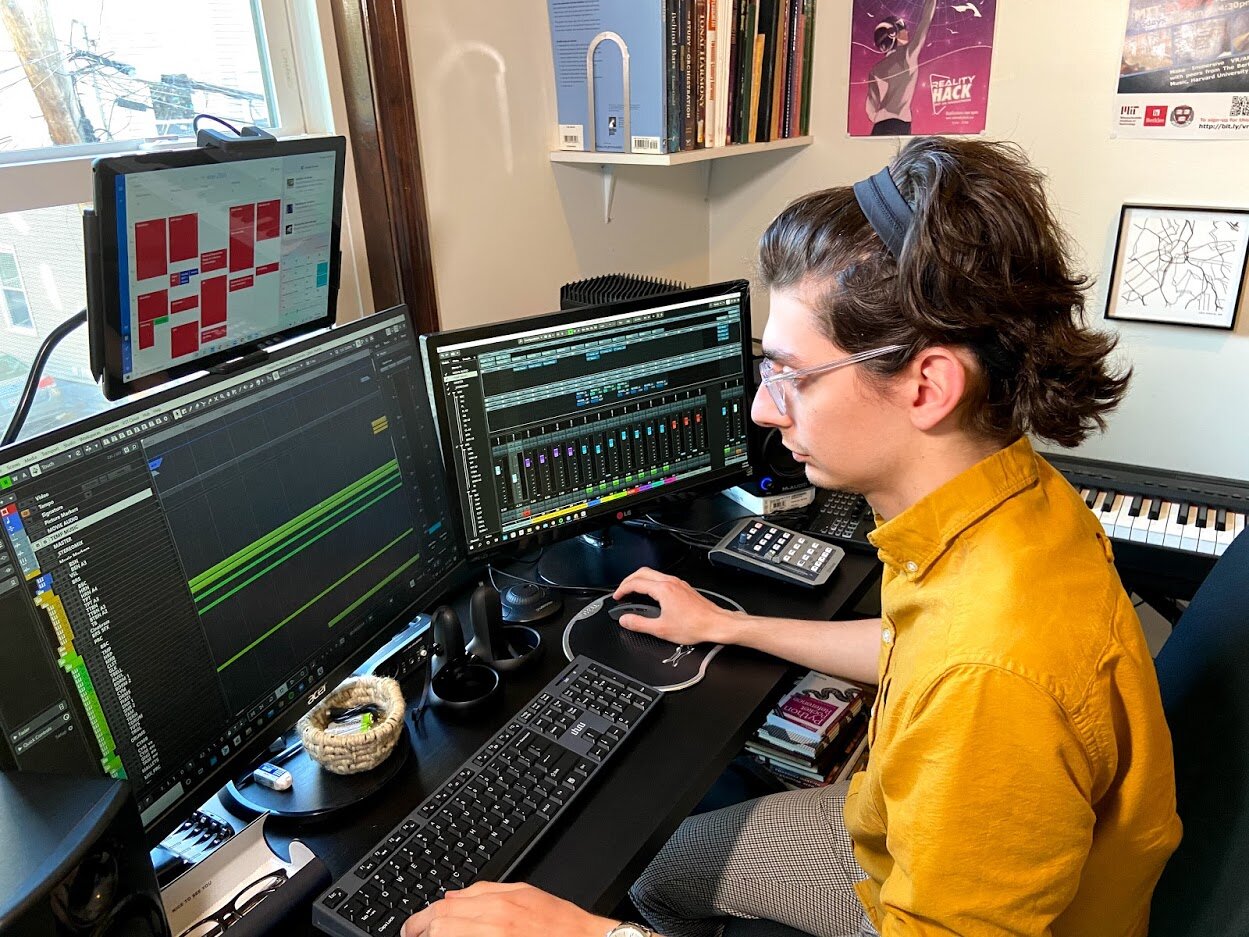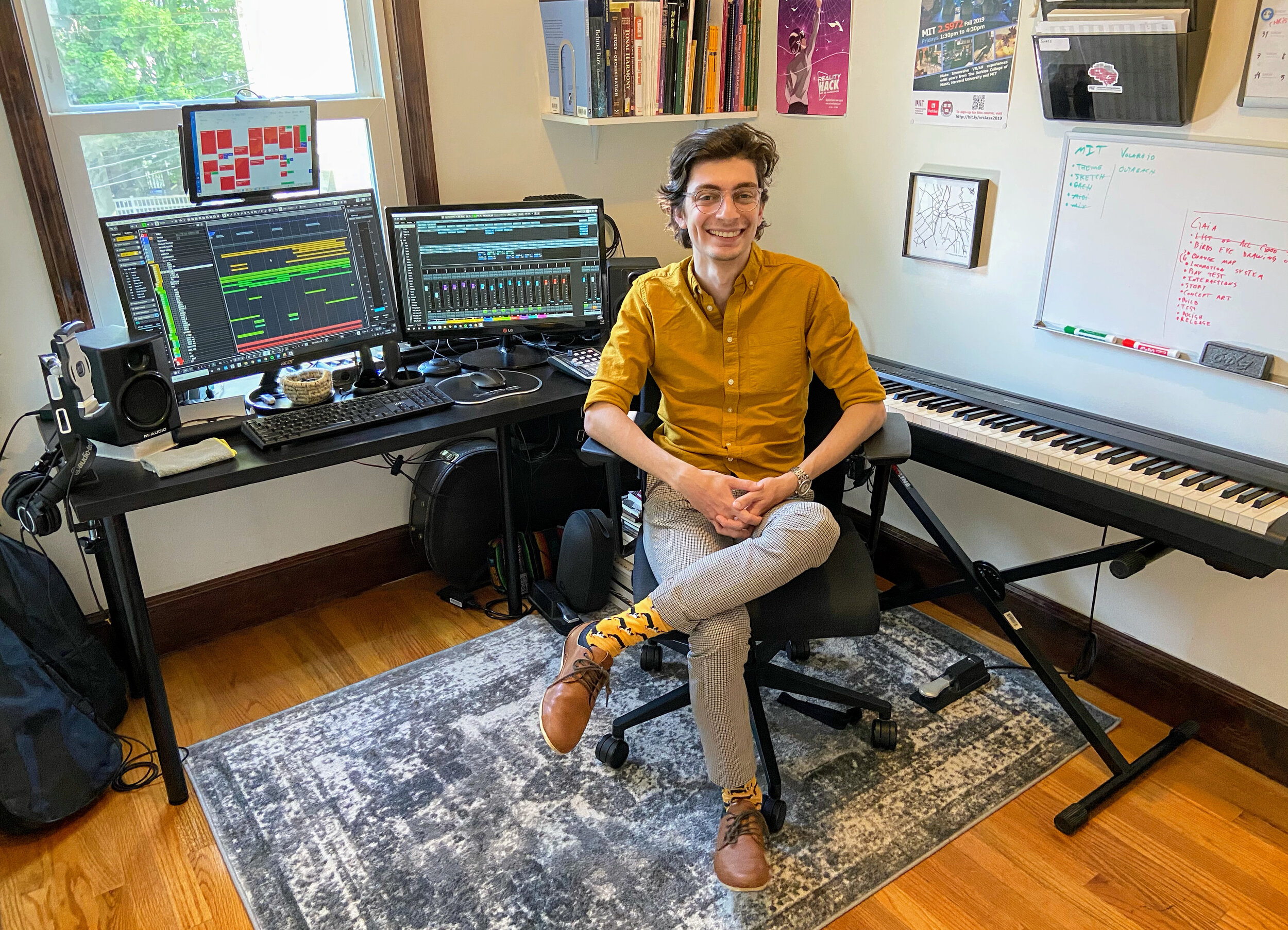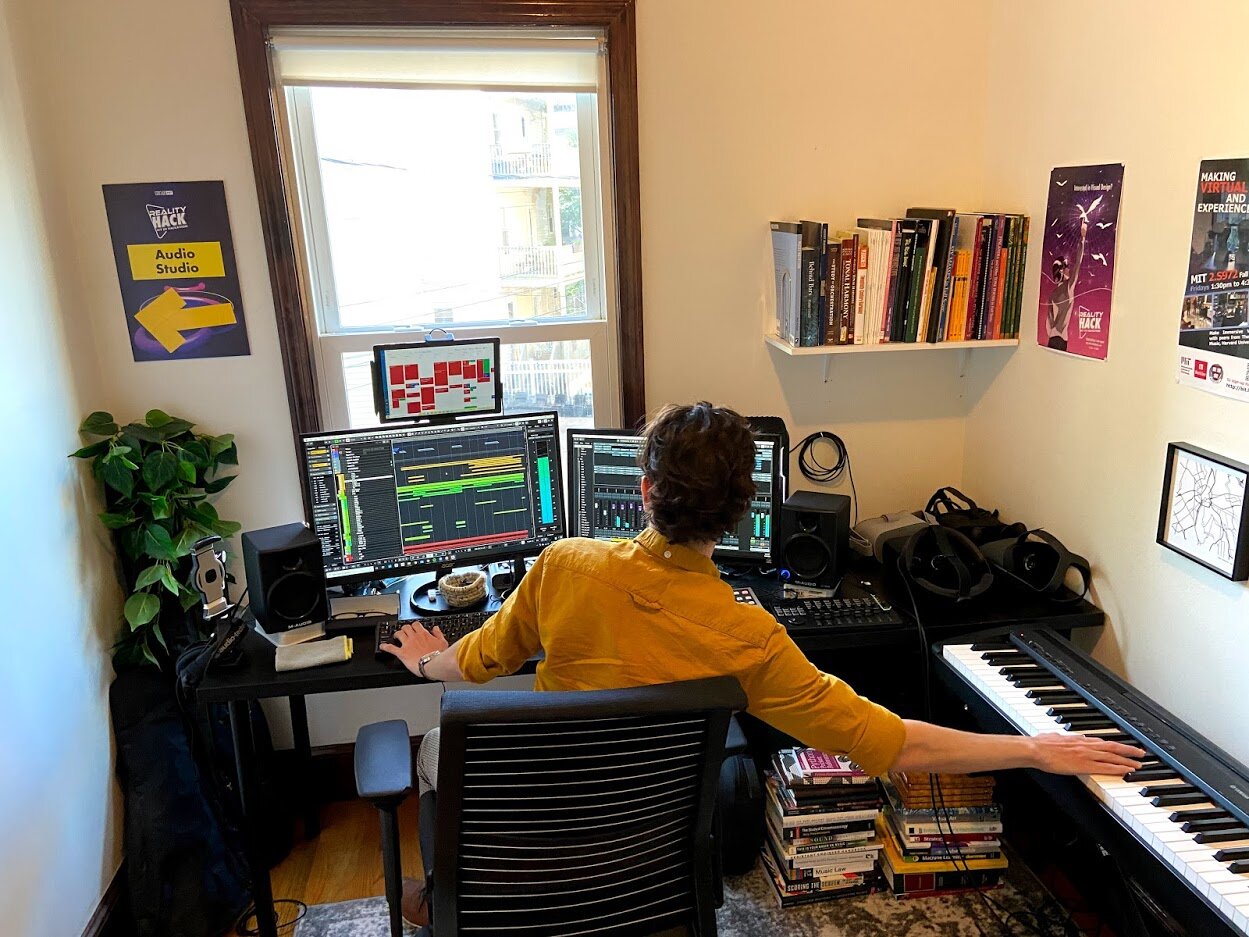
Blog
Sketching Music for Immersive Media
How Luís Zanforlin wrote orchestral sketches for Gaia, Maku XR's upcoming virtual reality experience.
Musical Ideas
When we started working on Gaia, Wyatt and I were having lots of conversations about the development process we were going to apply to this project. Out of these conversations, the one thing we were both in agreement with was that we needed to get a good sense of the tone of the project early on. This decision led me to want to create a variety of short music bites that explored the possible musical colors and themes we could use to guide us in developing the visual language of Gaia.
Writing the music bites started with me researching reference material that I thought would work well for Gaia. I knew I wanted the score to be mostly orchestral with sprinkles of synthetic instruments and natural sound. I looked through my scores and found lots of interesting moments I felt represented the feeling we were looking for, some of it came from big classical composers such as Bartók, Stravinsky and Persichetti but I also found some exciting new orchestral writing in more contemporary pieces such as Anna Clyne's "Night Ferry."
The Sketch
After getting a good sense of the harmonic language and general orchestration ideas I wrote a number of quick sketches on paper that explored quick musical moments. I don't really have too strict of a sketch writing process, in this case, it ended up being groups of four or six staff sketches with the instrumentation written above the notes rather than the conventional one staff per instrument class convention. I also need to write the sketches away from the piano so my mind won't gravitate towards musical ideas that just feel good to play with my hands.
Once I had enough ideas written down I fired up my DAW (Cubase) and put together an orchestral/synthetic template I felt was versatile enough to mock up all of the sketches. To make a quick template I just keep a file on my computer with all of my virtual instruments so I can easily duplicate the file and just delete the instruments I know I won't use. This makes it so I don't have to worry about recreating all of the signal flow every time I want a new template.
Mock-up
The final step is to perform the mock-ups on my MIDI piano and iterate on the ideas until they sound, and most importantly, feel like Gaia. This is the most fun part of the process because it is when you notice how easily one note can swing the entire project into a completely different direction. That's when you realize you already know somewhat clearly what you don't want it to sound and feel like and the emotions you do want it to convey. This is also when I start sharing some of the ideas with Wyatt and get to be inspired by his input and reaction to the sketches.
Main musical theme
The "main theme" which is in no way going to be the real main theme of Gaia, is my musical attempt of representing a universe trying to burst into the big bang a few times before it succeeds. I found that the more dissonant harmonies on the burst attempt combined with the Bartók Pizzicato would give it more of mysterious energy to it. Once the big bang happens the music goes into a classic "Hollywood style" cadence with lots of brass instruments and shiny percussion.
Music Bed
The "music bed" bite is more of a resting piece of music that could be used during puzzle scenes where the player is more likely focused on a task rather than the story. Stealing from minimalism felt like an obvious solution to this idea due to the constant repetition but it also allows for interesting musical interruptions to dynamically com in as the player performs a task.
Industrial Music
The "humans" track ended up being a more experimental music bite. I wanted to see if it was possible to bring in sound effects and human ambient tracks as musical elements. In this example, I routed the sound effects into a series of buses that I could control with a fader and modulate its volume as I would with a musical instrument. I'm not sure how I feel about the ambient blend as it is but I like what it does to the music so I'm thinking about exploring other ways I can modulate the sound effects to make them more musical. This is also where I played with the idea of layering synths into the score.
Impact Music
And finally, just for fun, I wrote some music for a potential meteor impact level. A timpani solo over tremolo low strings came out as more of a fun conceptual idea rather than something I heard in my mind and sometimes that's just the way to go. I'd like to incorporate some fun numerology or mathematical ideas into the timpani solo. I played a bit with the Fibonacci sequence which is a go-to for musicians but as we further develop Gaia, I'm sure we'll come across a mathematical principle that relates to the early universe and could more appropriately fit this piece.
What’s Ahead
I have no idea how many of these ideas will make it to the final version of Gaia. We may even change the entire tone and feel of the project as we further work on it but I think having a few musical sketches helps guide my ideas. Most importantly, having sketches lets me put off thinking about music while I work on the programming side of Gaia knowing that when it comes time to write the music I'll already have a starting point.






